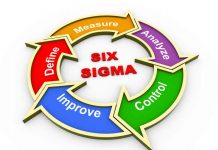RCA (Root Cause Analysis) was introduced when the need for a problem-solving technique arose. Every organization is always trying to continuously improve its functions, and problem-solving is an integral part of continuous improvement. RCA is a systematic method to investigate, identify and resolve the occurrence of a non-favorable incident.
RCA inspects the cause of the problem rooted in the system and amends it; rather than just dealing with the ongoing issue. The purpose of RCA implementation is to entirely expel the problem and to ensure that there will be no recurrence. The two major advantages of RCA are that it resolves the issue by finding the root cause, and provides substantial evidence of a cause and effect and solution. The general approach for conducting an RCA to analyze and define the events:
- What happened?
- How did it happen?
- Why did it happen?
The best way to have a foolproof RCA is to understand the problem from within. The main goal of RCA is to understand the cause and effect of the problem.
RCA Implementation
The initial process involves discerning the major damage done by the problem at hand and the identification and measurement of the specific problem. In other words, just analyze the entire situation to find out the issue and the extent of the damage. It is crucial to realize the ability of a problem to cause damage and line out the possible number of solutions.
Once the problem is identified, analyze it to find its root cause. Here are some tips on performing a root cause analysis:
- Explore all the potential causes initially.
- Look for major loopholes in the system that might be the cause of the problem.
- Collect the right data and ask the right questions (use of the 5 Whys tool is highly recommended).
- Implement a corrective plan of action, which also ensures the prevention of a problem’s recurrence.
Appropriately applying and enacting root cause analysis is exactly what makes it progressive and proactive.














